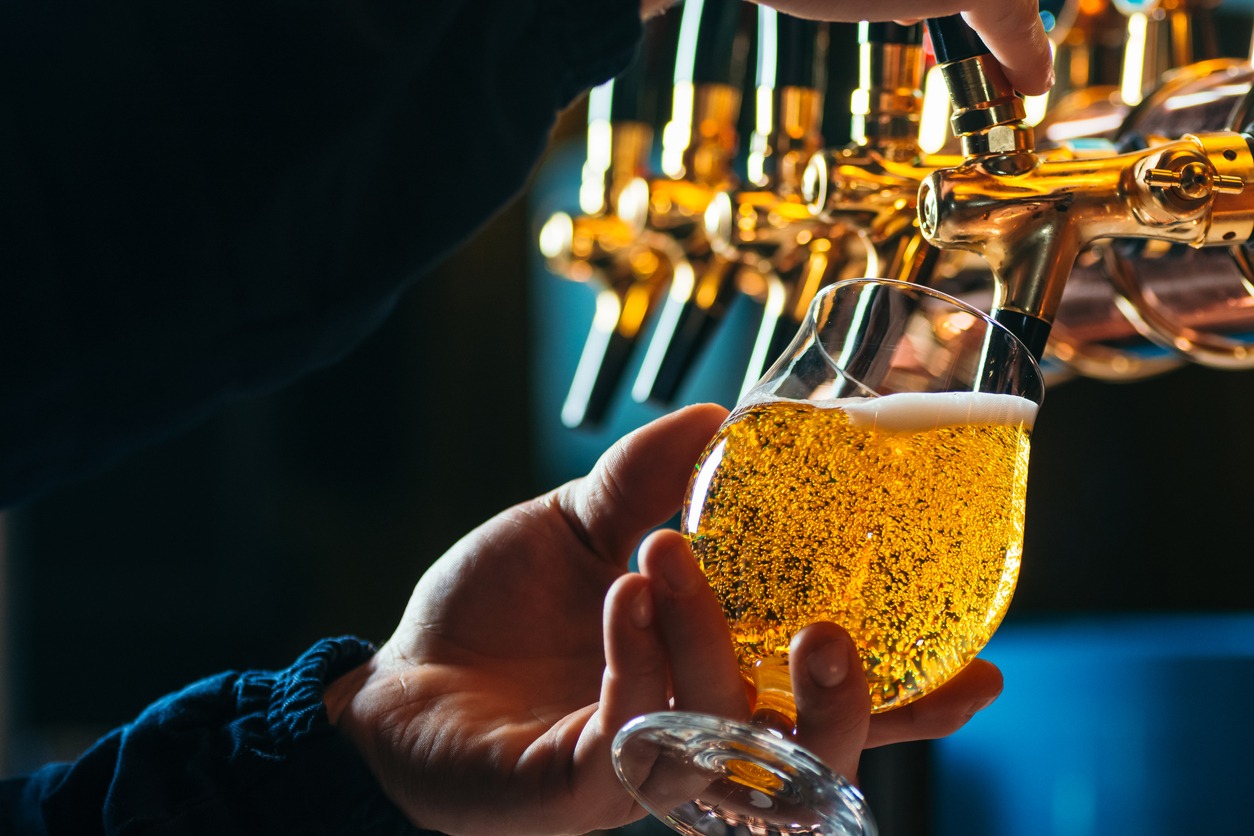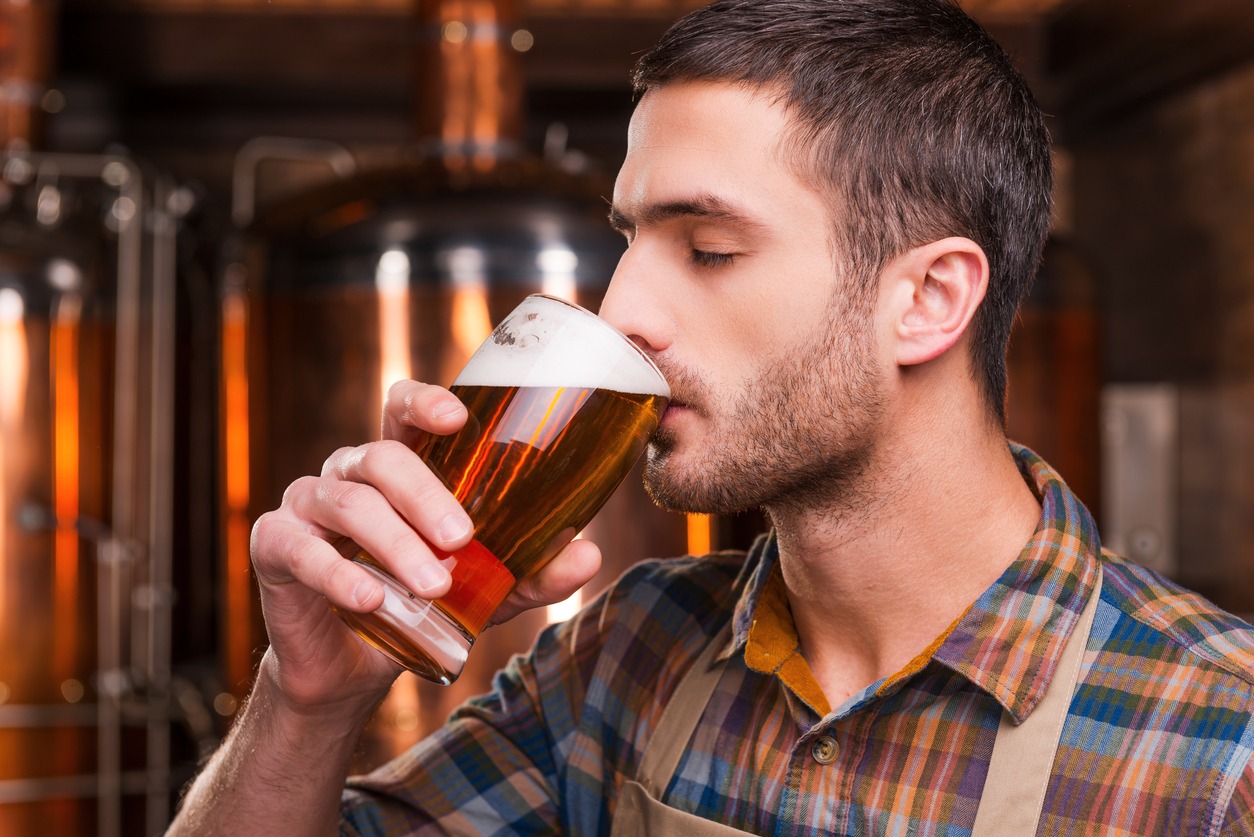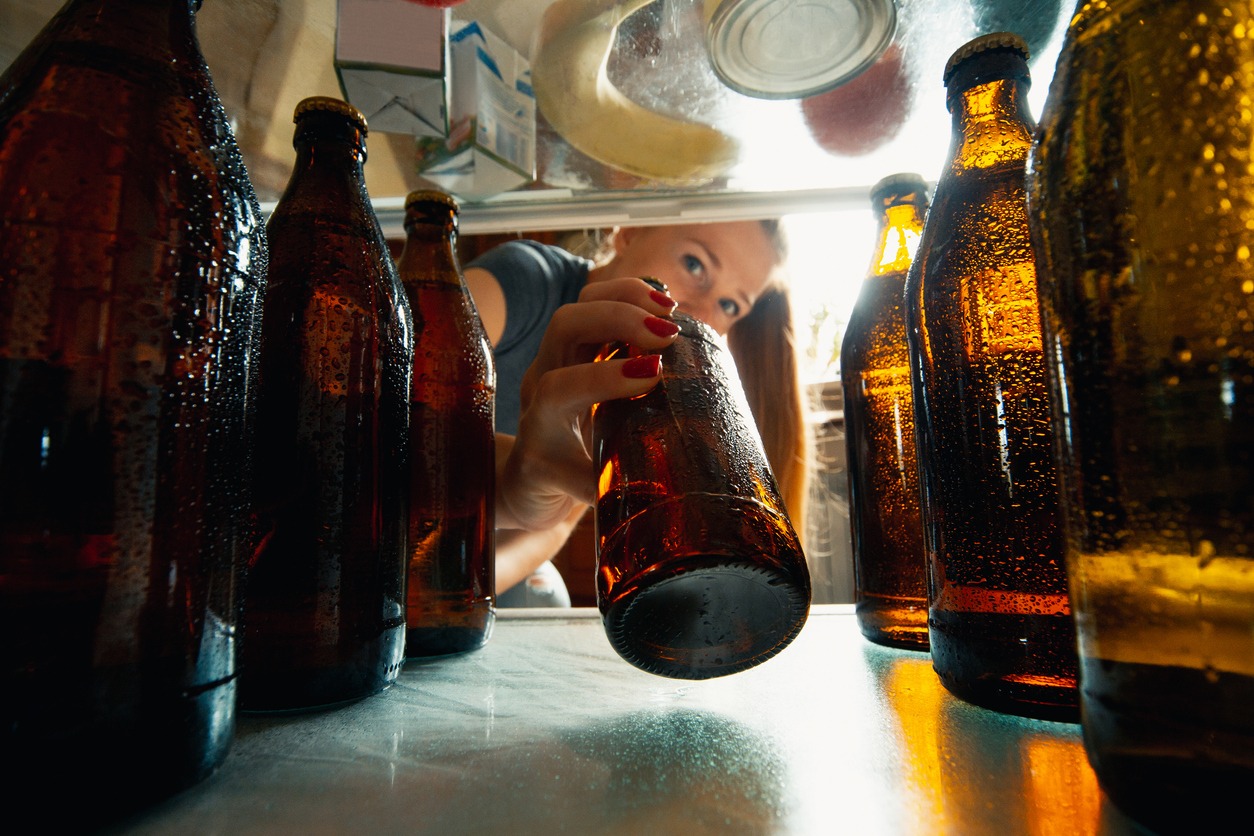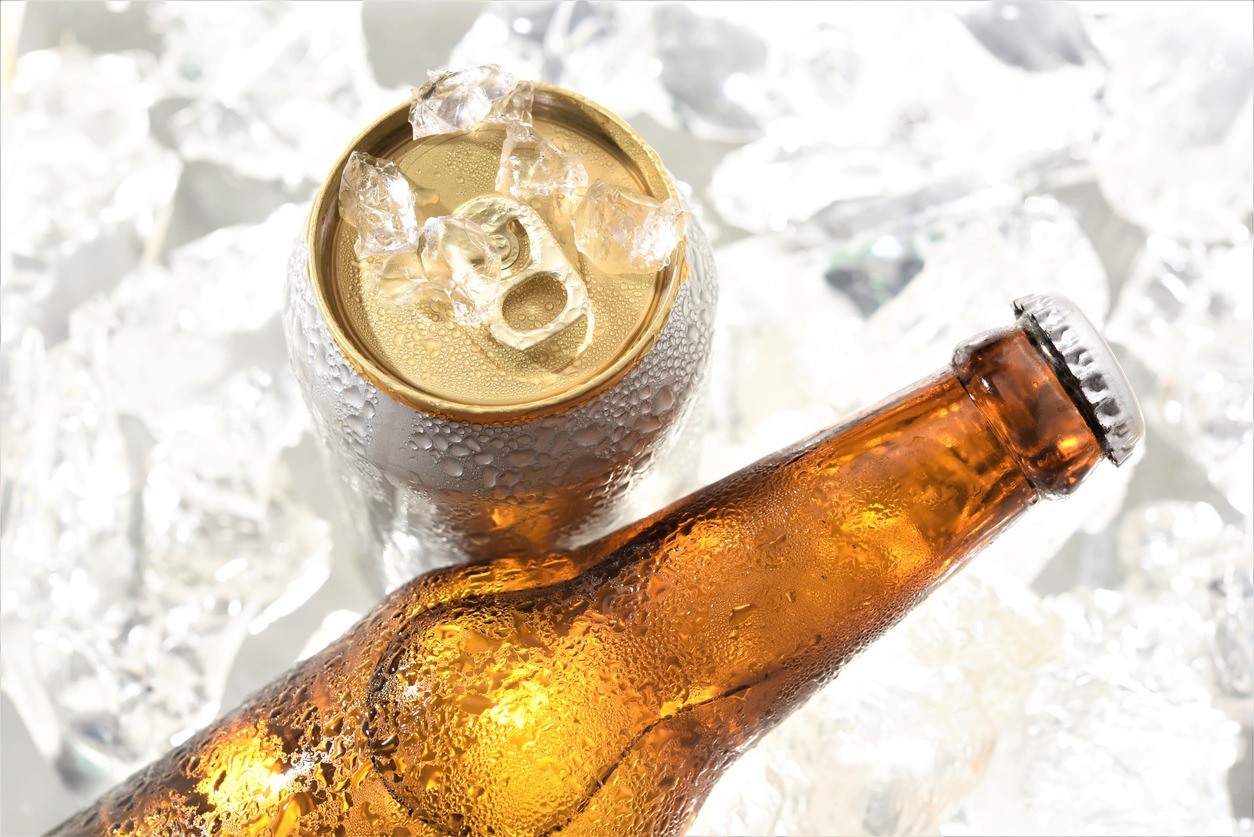People drink beer for a lot of reasons. For many, it is to discover crafts and flavors and understand various techniques from different parts of the world. But for others, they drink beer to connect with people, start conversations, and spend time with their friends. But no matter what your reason is, there is a unifying and universal truth, and that is fresh beer is always better.
The freshness of beer plays an important role in its quality. And when we say beer freshness, it goes beyond the concept of expiration dates and shelf life. It involves the preservation of flavors, aromas, and overall character that make a beer a delightful beverage. The quality of beer can be greatly affected by how fresh it is.
When a beer is stale or past its prime, it can have off-flavors, muted aromas, and a lackluster overall experience. On the other hand, fresh beer is aromatic, vibrant, and brimming with the intended flavors crafted by the brewer. Therefore, understanding and appreciating the importance of beer freshness can lead to greater enjoyment of this beloved drink.
If you are interested to learn more about this, you’re in the right place. In this article, we are going to provide you with more information about beer freshness and its significance. This includes the concept of beer freshness, factors that contribute to it, and the implications of freshness on beer quality, along with how you can ensure the freshness of your beer. This way, you will have a comprehensive understanding of what beer freshness is and its importance.
What Exactly is Beer Freshness?
Beer freshness pertains to the state of a beer being at its optimal quality and flavor profile shortly after production. It has several key components that contribute to the overall sensory experience of the beer, such as flavor, aroma, and carbonation.
You should also note that the concept of freshness can vary, depending on the style of beer. There are certain beer styles, such as hop-forward India Pale Ales (IPAs), that are often consumed fresher to fully enjoy their vibrant hop flavors and aromas. But there are also some beer styles that can benefit from aging to develop complex flavors over time, such as barrel-aged stouts or sour beers.
In addition to flavor, aroma, and carbonation, brewing techniques and packaging also play important roles in maintaining the freshness of beer. Brewers use different methods like using quality ingredients, precise fermentation control, and appropriate storage conditions to ensure the beer stays fresh as long as possible. Choosing the right packaging materials and minimizing exposure to light and oxygen during packaging also helps in preserving the freshness of the beer, especially during transportation and storage.
But did you know that others prefer to age beer underwater? If you want to learn more about this, read our post about how aging beer underwater transform its flavor and quality.
How Does Freshness Affect Beer Quality?
Freshness is a vital factor that directly influences the overall quality of beer. It affects different aspects of the beer’s aroma, flavor, and overall drinking experience.
Flavor Profile
Freshness plays a significant role in preserving the vibrant hop flavors in beers, which contribute bitterness, floral, citrus, or fruity characteristics to the beverage. As beer ages, the hop compounds can degrade, resulting in diminished hop flavors and a less vibrant taste.
Aside from that, beer freshness also helps maintain the sweetness and complexity of the malt flavors, which provides the backbone of the beer. It contributes to the beverage’s richness and balance. Over time, the flavors of malt can fade or become stale, which leads to a less enjoyable drinking experience. Also, beers that have adjuncts or special ingredients rely on freshness in order to preserve their unique flavors. Whether it is the addition of spices, fruits, or other flavorings, these elements can lose their potency and distinctiveness as the beer ages.
Aroma
Fresh beer has vibrant hop aromas, which range from floral and herbal to tropical and resinous. It is important that the hops are fresh to ensure that these aromas remain and contribute to the overall aroma profile of the beer. With time, hop aromatics can dissipate, resulting in a less aromatic beer. In addition to that, yeast plays an important role in beer fermentation, and it produces different yeast-derived aromas, such as spicy phenols or fruity esters to enhance the complexity of the beer. But as beer ages, these yeast-derived aromas can diminish, leading to a less expressive aroma profile.
Carbonation and Mouthfeel
Freshness is closely tied to the appropriate carbonation levels in beer. The presence of carbon dioxide provides a lively effervescence, creating a pleasant mouthfeel and enhancing the overall drinking experience. When beer loses freshness, carbonation can dissipate, resulting in a flat and less satisfying mouthfeel.
The impact of freshness on beer quality directly translates to the overall enjoyment and satisfaction of the beer-drinking experience. Fresh beer offers a sensory delight with its vibrant flavors, enticing aromas, and lively carbonation. By prioritizing freshness, beer enthusiasts can experience the true essence and intended characteristics of a beer style, maximizing their enjoyment and appreciation.
Factors that Affect Beer Freshness
There are several factors that can affect the freshness of beer from its production to consumption. It is important for both brewers and consumers to understand these factors for them to preserve the optimal freshness of beer. Below are the factors that affect beer freshness:
Temperature
Beer needs to be stored at appropriate temperatures to maintain freshness. When beer is exposed to high temperatures, the chemical reactions accelerate, leading to flavor degradation and potential spoilage. Therefore, it is important to store beer in a cool and consistent environment, avoiding temperature fluctuations. This is also the reason why there is only one particular beer that can be enjoyed in a frosted glass. If you are curious about this, read our article, What’s the Single Best Beer to Enjoy in a Frosted Glass?
Light
In addition to temperature, beer is also sensitive to light, especially ultraviolet (UV) light. UV rays can react with hop compounds, which may cause “skunky” or “light-struck” flavors or sulfur smell and taste. A bit of light can do this over a long time, such as when a beer bottle is under halogen lights for months or harsh lights can do this fast, like direct sunlight for just half an hour. To prevent light damage, beer should be stored in dark or opaque containers and shielded from direct sunlight. This is one of the reasons cans have been so popular among brewers.
Oxidation
The exposure of beer to oxygen can have detrimental effects on its freshness. It’s because oxygen can react with different compounds in beer, which may lead to off-flavors and oxidation. To prevent this, brewers use techniques like purging containers with inert gasses or using oxygen-barrier packaging materials to minimize oxygen exposure.
Time
Both alcohol and hops are natural preservatives, and with them, beer does not go bad and becomes unsafe to drink, unlike other foods and drinks. However, even small amounts of oxygen, light, and heat will affect the freshness of beer over time. Some beers will keep their flavors for longer periods, and others can even benefit from cellaring. But hoppy beers, such as pale ales, IPAs, and XPAs, will deteriorate faster.
Signs That Your Beer is No Longer Fresh
If you like to drink beer, it is essential to be able to identify potential freshness issues. Being able to recognize signs of beer freshness problems will allow you to assess the quality of the beer before you consume it. Below are some of the signs that your beer is no longer fresh:
Off-Flavors and Aromas
A skunky aroma is usually a result of beer being exposed to light. It gives the beer a distinct and unpleasant odor, which is similar to the scent of the skunk. This usually occurs in beers stored in clear or improperly packaged containers. Aside from that, there are also beers that may smell like cardboard or paper, which indicates oxidation. This also results in off-flavors and a stale taste.
However, if your beer is sour or has a vinegar-like taste and aroma, it can be a sign of bacterial contamination. If you find a beer that exhibits these characteristics and it is not a deliberate sour or wild ale style, it may indicate freshness issues.
Loss of Carbonation
Fresh beer should have enough carbonation to make it lively and refreshing. Therefore, if your beer appears flat or lacks the expected effervescence, it is possible that it has lost carbonation over time or due to improper storage.
Haze or Cloudiness
Haze is sometimes intentional in some beer styles. However, an excessive or unusual haze in a beer that is not supposed to be hazy may indicate freshness issues or possible problems with yeast sediment or protein stability.
Floating Particles or Sediment
Beers that have excessive floating particles or sediment beyond what is expected for the style might also indicate issues with filtration or stabilization. In addition to that, it could also suggest poor handling or storage conditions.
It’s important to note that some beer styles, such as barrel-aged beers or certain sour styles, intentionally exhibit characteristics that may resemble some of the freshness issues mentioned above. These styles undergo specific aging or fermentation processes to develop unique flavors and aromas.
If you encounter any of these signs in a beer that is not intentionally designed to have them, it may indicate freshness issues. While not all off-flavors or appearance changes are a direct result of freshness problems, they serve as warning signs to investigate further and assess the beer’s overall quality.
How to Maintain Beer Freshness
After learning about the factors that affect beer freshness and the signs to look out for when it comes to freshness issues, it is also important to learn about how you can maintain beer freshness. To ensure optimal freshness and quality of beer, it is important to follow proper storage and handling. Below are some of the best tips we can give on how you can maintain beer freshness.
Keep beer stored in areas with the right temperature.
It is important to store beer in a cool and consistent environment, preferably between 38°F (3°C) and 55°F (13°C). Do not expose beer to extreme temperatures or fluctuations as they can accelerate chemical reactions and compromise the freshness of the beer.
Place beer in dark and upright storage.
It is important to shield beer from light exposure by storing it in a dark place or using opaque containers. If they are in bottles, they should be stored upright to minimize contact between the beer and the bottle cap, which can help reduce the risk of oxidation.
Do not shake beer containers.
You need to limit unnecessary movement or shaking of beer containers, as this can lead to increased oxygen exposure and loss of carbonation.
Always check the freshness or packaging dates.
You also have to pay attention to freshness dates or packaging dates indicated on the beer. Search for beers with the latest production dates or those within the recommended freshness window. This is very important, especially for styles like hop-forward beers, which are best enjoyed fresh.
Always pick a beer that is in quality packaging.
It is important to inspect the packaging of the beer for any signs of damage, such as broken seals and dented cans. Always pick beer in cans or dark glass bottles to protect them against light exposure.
Understand beer dating and codes.
It is also great if you can familiarize yourself with the freshness dating system used by breweries. Some breweries use the Julian dates, while others use specific codes or labeling to indicate production or best-by dates. Learning to decipher these codes will help you make informed decisions regarding beer freshness. You may visit the website of the brewery or contact them directly to understand their freshness dating system and recommended shelf life for different styles of beer.
Drink beer fresh.
If the beer style that you have is at its best when it is closest to the time of packaging, then you don’t have to wait. Drink your beer immediately to enjoy its freshness. After all, beer is not something to hang on to for a special occasion a long time away.
How Brewers Ensure Beer Freshness
From the standpoint of the brewer, maintaining beer freshness is a critical aspect of delivering high-quality products to their consumers. That is why they use different practices and quality control measures to ensure the freshness and optimal flavor profile of their beers. If you are interested to learn about these, below are some of the ways how brewers ensure beer freshness:
Using Quality Ingredients
Brewers start with fresh and high-quality ingredients, such as hops, malt, yeast, and water. Through the use of fresh ingredients, it sets the foundation for producing flavorful and fresh beer.
Formulating Recipes
Great brewers also craft recipes to balance flavors and guarantee that the intended character of the beer is maintained over time. They also consider the impact of aging and the shelf life of each beer style during the formulation process.
Precise Fermentation Control
Maintaining optimal fermentation conditions, such as temperature control and yeast management, is crucial to achieving consistent flavors and avoiding off-flavors that can compromise freshness.
Sensory Evaluation
Brewers also conduct sensory analysis at different stages of beer production. They do this to assess the flavors, aromas, and overall quality of the beer. This also helps them identify any possible freshness issues or off-flavors early on.
Quality Assurance Testing
In breweries, there are laboratories and quality control departments that perform different tests, such as microbiological analysis, to make sure that the beer is free from contaminants that can affect freshness and stability.
Packaging Integrity
Brewers also focus on maintaining the integrity of their packaging materials, such as bottles and cans. This way, they can minimize oxygen exposure and prevent carbonation loss. Most brewers pick packaging materials that can provide an effective barrier against oxygen ingress and light exposure. That is why most of them use packaging materials like cans with good scavenging liners, bottles with reliable closure systems, and amber or dark glass bottles.
Clear Labeling
The freshness dates, packaging dates, or best-by dates are clearly indicated by brewers on their products. This way, consumers will be able to identify the freshness of the beer and make informed purchasing decisions.
Maintaining freshness is a continuous effort for breweries. Brewers pay meticulous attention to every step of the brewing process, from ingredient selection to packaging, to ensure that the beer reaches consumers in its freshest and highest quality state. By prioritizing freshness and implementing robust quality control measures, breweries strive to deliver exceptional beer experiences to beer enthusiasts.
Conclusion
Beer freshness is one of the most important aspects of the beer-drinking experience. It’s because the freshness of beer can significantly affect its flavor, aroma, and overall quality. Therefore, understanding what beer freshness entails, how it affects beer quality, and how to maintain it is important for both beer enthusiasts and brewers.
Fresh beer allows for the full expression of flavors, aromas, and overall enjoyment intended by the brewers. Whether you are enjoying a hop-forward IPA or savoring a barrel-aged stout, embracing freshness enhances the beer-drinking experience and deepens the appreciation of this beloved beverage. We hope this article helped you learn more about beer freshness and its importance.






